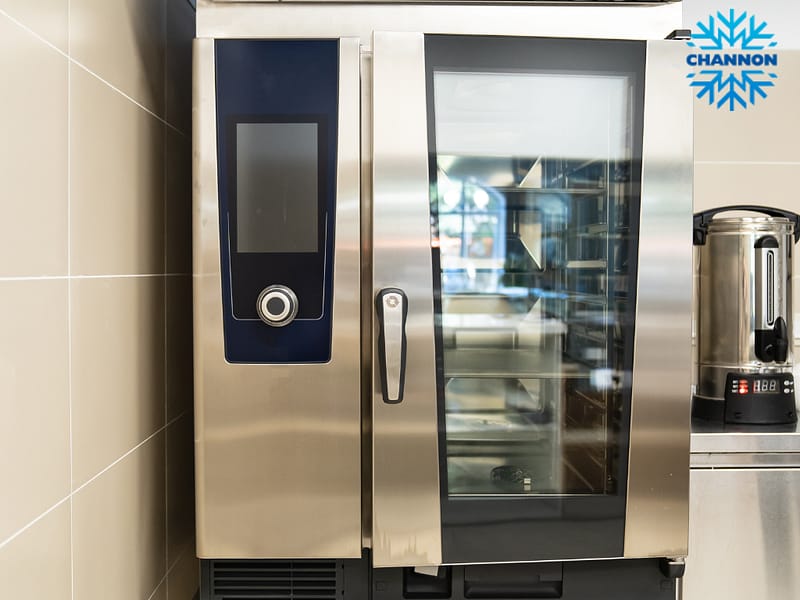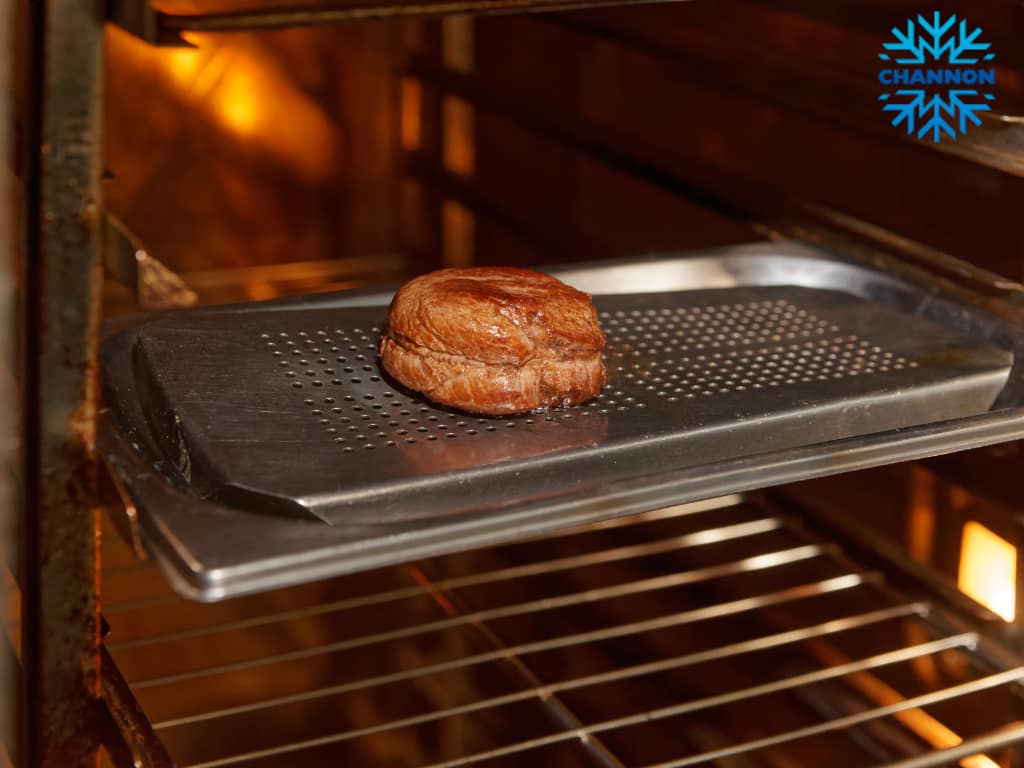A convection steamer is a modern kitchen appliance that combines the principles of steam cooking with convection heat. It works by circulating hot steam around the food, ensuring even cooking and retaining moisture. Unlike traditional methods, it doesn’t require oils or fats, offering a healthier cooking alternative. The basic principles of a convection steamer involve using steam to cook food quickly while preserving its natural flavors and nutrients.
The Classics: A Glimpse into Traditional Cooking Methods
Time-Honored Techniques
Traditional cooking methods encompass a variety of techniques, most notably using ovens and stovetops. These methods rely on direct heat, either from an electric or gas source, to cook food. Ovens provide a consistent, enclosed environment for baking and roasting, while stovetops offer versatility for frying, boiling, and sautéing. Each method has its unique impact on the taste, texture, and appearance of food.
Comparing Cooking Efficiency and Time
The Race Against Time: Cooking Speed of Convection Steamers
Convection steamers stand out for their efficiency and speed. Thanks to the rapid heat transfer of steam, these appliances cook food significantly faster than traditional ovens or stovetops. For example, vegetables and meats that typically take a long time to cook can be prepared in a fraction of the time, without compromising on quality or taste.
Streamlining the Kitchen: Workflow Efficiency
The use of convection steamers can have a profound impact on kitchen workflow. By reducing cooking times, these steamers free up chefs to focus on other aspects of meal preparation. This efficiency is particularly beneficial in commercial kitchens where time is of the essence, but it’s also advantageous for home cooks looking to streamline their cooking processes.
Nutritional Value: Steaming vs. Conventional Cooking
| Aspect | Steaming | Conventional Cooking (e.g., boiling, frying) |
|---|---|---|
| Nutrient Retention | Steaming is superior in retaining nutrients, particularly water-soluble vitamins like Vitamin C and B vitamins. The minimal use of water and lower cooking temperatures prevent the nutrients from being leached out or destroyed. This method is especially beneficial for cooking vegetables, as it preserves their color, texture, and nutritional value. | Conventional cooking methods often involve high temperatures and more water, which can lead to significant nutrient loss. For instance, boiling vegetables can result in the loss of water-soluble vitamins into the cooking water, while frying might degrade heat-sensitive nutrients due to high temperatures. |
| Flavor Preservation | Steaming enhances the natural flavors of food, retaining the original taste and aroma of the ingredients. It’s an excellent method for cooking delicate items like fish and vegetables, where preserving the authentic flavor is key. Additionally, steaming does not require additional fats or oils, making it a healthier option that brings out the true essence of food. | Traditional cooking methods can alter the inherent flavors of ingredients. While methods like frying can add richness and complexity to dishes, they might also mask the natural flavors. Boiling can dilute the taste of food, requiring additional seasonings or sauces to c |
Energy Consumption and Cost Effectiveness
Powering Efficiency: Energy Use in Convection Steamers
Convection steamers are often lauded for their energy efficiency, especially when compared to traditional ovens and stovetops. By utilizing steam and convection heat, these appliances cook food more quickly and uniformly, reducing the overall energy usage. This efficiency is particularly noticeable in commercial kitchens, where large volumes of food need to be prepared, but it’s also significant for home users looking to cut down on their energy bills.
Financial Foresight: The Economics of Steaming
While the initial cost of a convection steamer may be higher than traditional cooking appliances, the long-term savings are considerable. Due to their energy efficiency, convection steamers can reduce monthly utility costs. Additionally, the speed and efficiency of these steamers can lead to less food waste, another cost-saving aspect. Over time, the investment in a convection steamer can pay off, making it a cost-effective choice for both home cooks and professional chefs.
Ease of Use and Convenience
Streamlined Cooking: The User-Friendly Design of Convection Steamers
Convection steamers are designed with user convenience in mind. Many models come with intuitive controls, pre-set cooking options, and easy-to-clean features, making them significantly more user-friendly than some traditional cooking methods. The learning curve for operating a convection steamer is usually short, allowing even novice cooks to achieve consistent and high-quality results.
Culinary Versatility: Adapting to Diverse Cooking Styles
One of the standout features of convection steamers is their versatility in cooking various cuisines. Whether it’s steaming vegetables, cooking delicate seafood, or preparing tender meats, these appliances can handle a wide range of cooking tasks. This adaptability makes them suitable for preparing dishes from different culinary traditions, offering an all-in-one solution for diverse cooking needs.
Space Utilization in the Kitchen
Space Planning: Accommodating a Convection Steamer
Introducing a convection steamer into a kitchen requires consideration of space. Convection steamers come in various sizes, from countertop models suitable for smaller kitchens to larger, freestanding units for more spacious areas. Assessing the available space and matching it with the right size of the steamer is crucial for efficient kitchen layout.
Harmonious Arrangement: Integrating Steamers into Kitchen Design
Optimizing kitchen layout with a convection steamer involves strategic planning. In a home kitchen, a countertop model can be a space-saving solution that complements other appliances. In commercial settings, larger models might require dedicated space but can significantly enhance kitchen workflow. It’s important to consider factors like proximity to water sources and ventilation when installing a steamer to ensure functionality and safety.
Maintenance and Longevity: Ensuring Enduring Quality
Simplifying Cleanliness: Maintenance of Convection Steamers vs. Traditional Cooking Appliances
Convection steamers generally offer a more straightforward cleaning process compared to many traditional cooking appliances. Due to the nature of steam cooking, food residue and grease buildup are often less of an issue, simplifying the cleaning process. Many models come with easy-to-clean surfaces and self-cleaning features, whereas traditional ovens and stovetops might require more intensive scrubbing and the use of harsh chemicals to remove baked-on residue.
Built to Last: Assessing the Durability of Convection Steamers
When it comes to durability and lifespan, convection steamers are designed to stand the test of time. Their construction often involves fewer mechanical parts than traditional ovens, reducing the likelihood of breakdowns. Proper maintenance and regular cleaning can further extend the life of a convection steamer. In contrast, traditional cooking methods, particularly those involving direct heat and flame, can lead to quicker wear and tear of components.
Conclusion
For consumers and chefs making a decision, several factors should be considered. Evaluate your cooking style, the types of dishes you frequently prepare, and your kitchen’s space constraints. Consider the importance of energy efficiency, maintenance ease, and the long-term sustainability of your cooking method. Chefs in commercial settings might prioritize speed and uniformity, while home cooks might value convenience and versatility. Ultimately, the choice depends on individual needs, preferences, and culinary aspirations.






